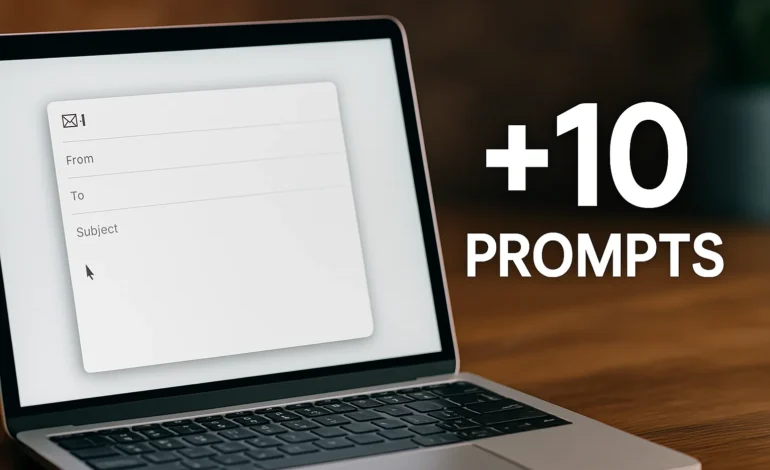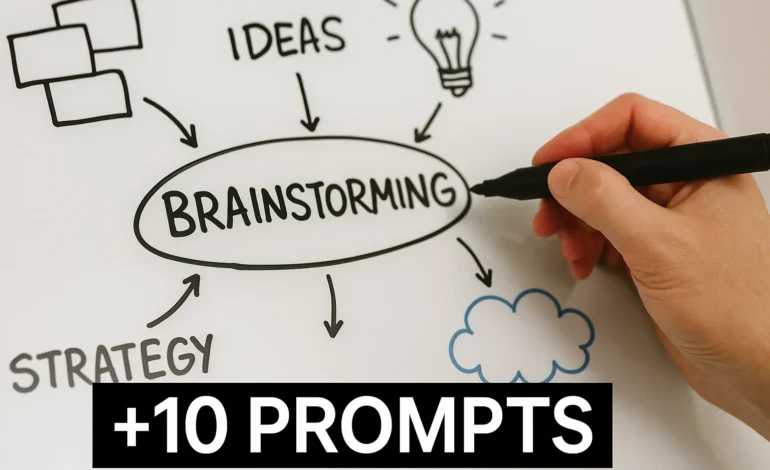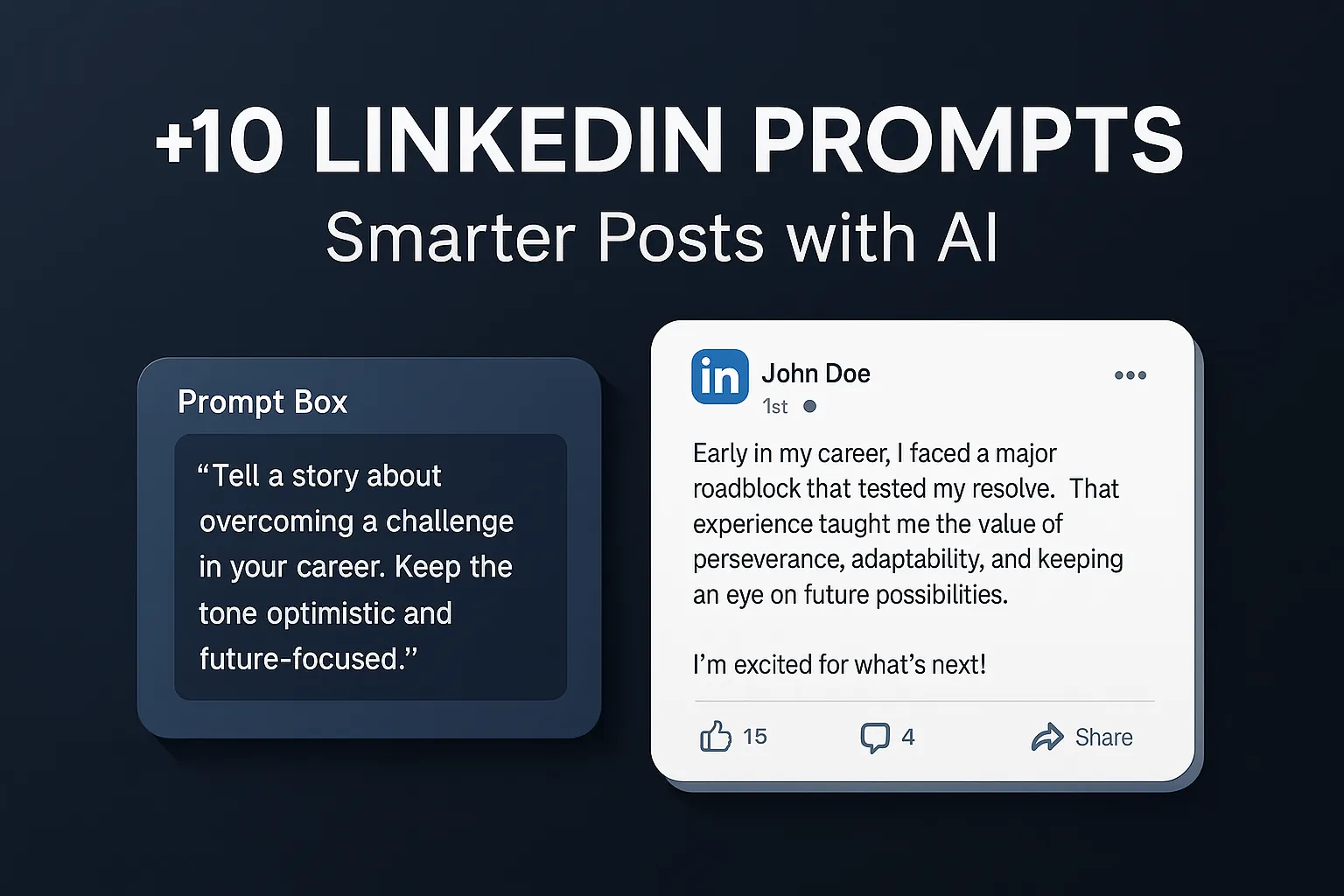
10+ AI Prompts for Better Emails — From Quick Replies to Complex Cases
Great email writing is about clarity, tone, and timing. The following AI prompts help you write faster, sound more natural, and adapt your communication to different work situations—while still sounding like yourself.
Each prompt includes a copy button and works best when you add your notes or message draft at the end for full context.
🔍 Jump to a Use Case
- 1. Quick but Polite Follow-Up
- 2. Friendly Meeting Scheduler
- 3. Dealing with Delay
- 4. Rewriting Something Too Harsh
- 5. Writing with Warmth (Even in English)
- 6. Saying No Without Burning Bridges
- 7. Clarifying a Confusing Request
- 8. Writing a Summary After a Call
- 9. Reviving a Cold Lead
- 10. Quick Team Celebration
- 11. Giving Constructive Feedback
- 12. Escalating an Issue (Without Aggression)
- 13. Reconnecting After Silence
- 14. Interview Thank-You with Personality
- 15. Recapping a Workshop or Training
1. Quick but Polite Follow-Up
Perfect for project nudges or checking in on unanswered threads—assertive, not annoying.
Write a short, polite follow-up email to someone who hasn’t replied to my message from last week. Keep the tone respectful but clear. Mention the topic briefly and ask if they need anything from me.
2. Friendly Meeting Scheduler
Removes scheduling friction and makes it easy to respond quickly.
Draft a friendly email proposing two time slots for a 30-minute call next week. Mention the topic, keep the tone casual, and include a Calendly link.
3. Dealing with Delay
Shows responsibility while keeping momentum. Especially useful in external client work.
Write a professional email apologizing for a delay in delivery. Acknowledge the impact, explain briefly, and reaffirm the updated timeline.
4. Rewriting Something Too Harsh
Transforms heat-of-the-moment drafts into calm, professional communication.
Rephrase this email to sound firm but respectful: ‘We expected the draft last Friday and haven’t heard anything. Please update us today.’
5. Writing with Warmth (Even in English)
Adds subtle friendliness and improves tone—especially across cultures.
Take this email and add more warmth without changing the structure too much. Make it sound like someone who’s supportive, but still focused.
6. Saying No Without Burning Bridges
Preserves the relationship while protecting your time. Ideal when you’re overloaded but don’t want to sound unhelpful.
Write a polite email declining a request to join a project due to bandwidth. Be appreciative, honest, and suggest a later time or alternative support.
7. Clarifying a Confusing Request
Great for avoiding misunderstandings early—especially across teams or departments.
Write an email asking for clarification about a task that was assigned. Keep the tone constructive, collaborative, and avoid sounding critical.
8. Writing a Summary After a Call
Shows professionalism and saves your team from memory gaps later on.
Draft a short summary email after a client call. Recap the main decisions, list next steps, and assign responsibilities. Keep the tone efficient.
9. Reviving a Cold Lead
This balances respect with initiative—no pushiness, just value-driven outreach.
Write a friendly email to re-engage a client who hasn’t responded in 3 months. Remind them of our last conversation and offer something of value (e.g. an update, article, or idea).
10. Quick Team Celebration
Boosts morale and reinforces momentum—small gestures matter in team dynamics.
Write a short team email celebrating a small win (e.g. early delivery, positive client feedback). Keep it light and appreciative.
11. Giving Constructive Feedback (Without Harshness)
Strikes the balance between honesty and care—especially in team settings or leadership roles.
Write a professional and supportive email giving constructive feedback to a colleague. Focus on one behavior or result. Be clear, specific, and express a desire to help improve—not criticize.
12. Escalating an Issue (Without Sounding Aggressive)
Helpful for balancing pressure and tone—especially across departments.
Draft an internal escalation email to the IT team about a recurring issue. Briefly explain the technical problem, how it affects project timelines, and what the team has tried already. Ask for advice or temporary workarounds. Tone: urgent but respectful.
13. Reconnecting with a Client After Months of Silence
Soft, respectful reactivation that prioritizes usefulness over pushiness.
Write a warm email to a client we haven’t heard from in 4 months. Mention where we left off, acknowledge that timing may not have been ideal, and offer a new update or idea to re-spark the conversation. Keep it light and easy to respond to.
14. Thank-You Email After a Job Interview
Turns a formality into a personal moment of connection—works great when it’s sincere.
Write a thank-you email after a job interview with a department lead. Mention something specific we discussed, express enthusiasm for the role, and briefly reaffirm why I’d be a strong fit. Keep it warm, natural, and professionally excited.
15. Recapping a Workshop or Training You Attended
Great for showing initiative and bringing value back to the team.
Write a short follow-up email to my team after a training I attended. Summarize the most useful insights, explain how they might apply to our current work, and suggest one small idea we could test.














